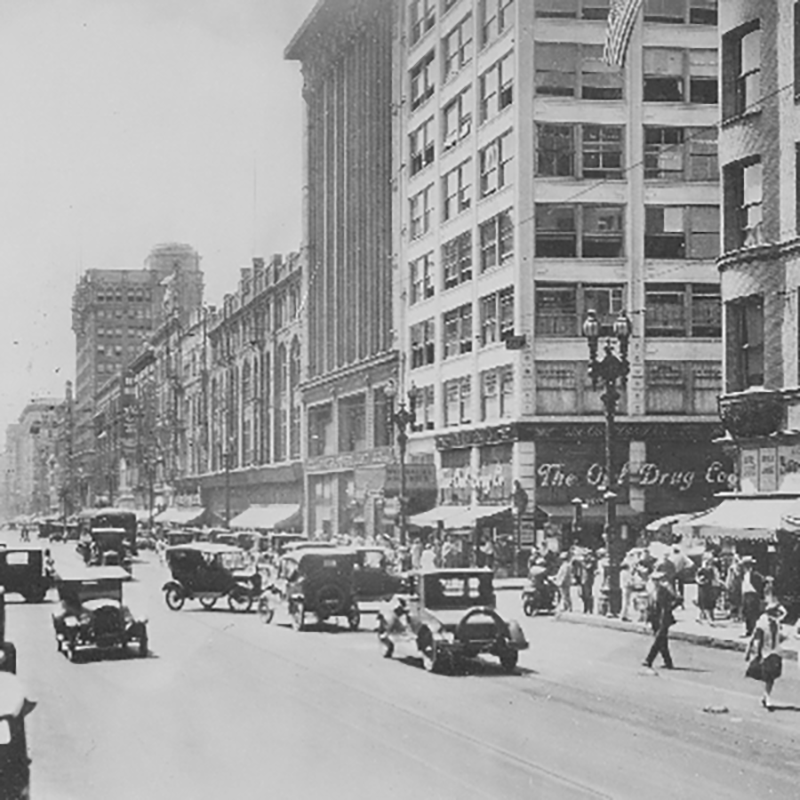
1930 was a momentous year for the law school: the school acquired a new location, a new name and new mission in the space of that one year.
For its first decade, the school had grown and prospered, but its ambitions demanded that the school evaluate whether its location and program were adequate. Most immediately pressing was the issue of the school’s location. Events were brought to a head by Loyola College’s relocation from the Venice Boulevard address out to the newly acquired Westchester property.
While the law school had done well in its original location on Venice Boulevard, several factors favored moving the school to a downtown location. Perhaps the most compelling reason for a move downtown was to place both the faculty and the students nearer to the law offices and courts located in the downtown civic center. This was a convenience not only for the students, who hoped to clerk for lawyers during their time in law school, but most faculty were still practicing lawyers as well. While some thought was given to joining the move out to Westchester, the judgement of Father Donovan and the dean was that the law school needed to be near the heart of the Los Angeles legal community.
Another factor involved in the decision to relocate was the school’s ambition to achieve membership in the Association of American Law Schools. A day division was necessary to receive this invitation and so the school needed to significantly increase its applicant pool and enrollment. It was felt that a downtown campus, with a strategic location and expanded space, would enable the school to attract a large enough number of new students to create a day program.
The Jesuit authorities approved the move to a new location on the condition that the school create the new day program. The move was announced in September of 1929 and arrangements were quickly made to the rent the fourth floor of the Byrne Building, located near the corner of Broadway and Third Street.
One final decision had to be made. The law school had originally adopted the name of St. Vincent’s to stress the school’s connection with St. Vincent’s College, and kept that name even after the college had renamed itself as Loyola College. But with the college moving to Westchester, it was felt that it would only be confusing for the law school to retain the St. Vincent’s name. Therefore, the law school officially became the Loyola Law School that same year of 1930.
The new day division held classes from 9:00 a.m. to noon and tuition was set $250 per year. The evening program’s classes were held from 7:00 p.m. to 10:00 p.m. and tuition remained at $200 per year.
The school’s new Broadway home, the five-story Byrne Building, was built in 1896. It was designed by Sumner Hunt, a well-known architect of the time. The building has had many uses over the years and still stands, although its interior has been completely renovated and now contains loft apartments.
Although the school’s stay at the rented Broadway facility was comparatively brief, the school managed to sustain itself and grow, despite these being the depression years. Several faculty members reportedly worked without pay, and the school gave students generous loan extensions. A notable occurrence at the time was the graduation of Dr. H. Claude Hudson in 1931, the school’s first African American graduate. Dr. Hudson had been one of the founders of the NAACP in 1910.